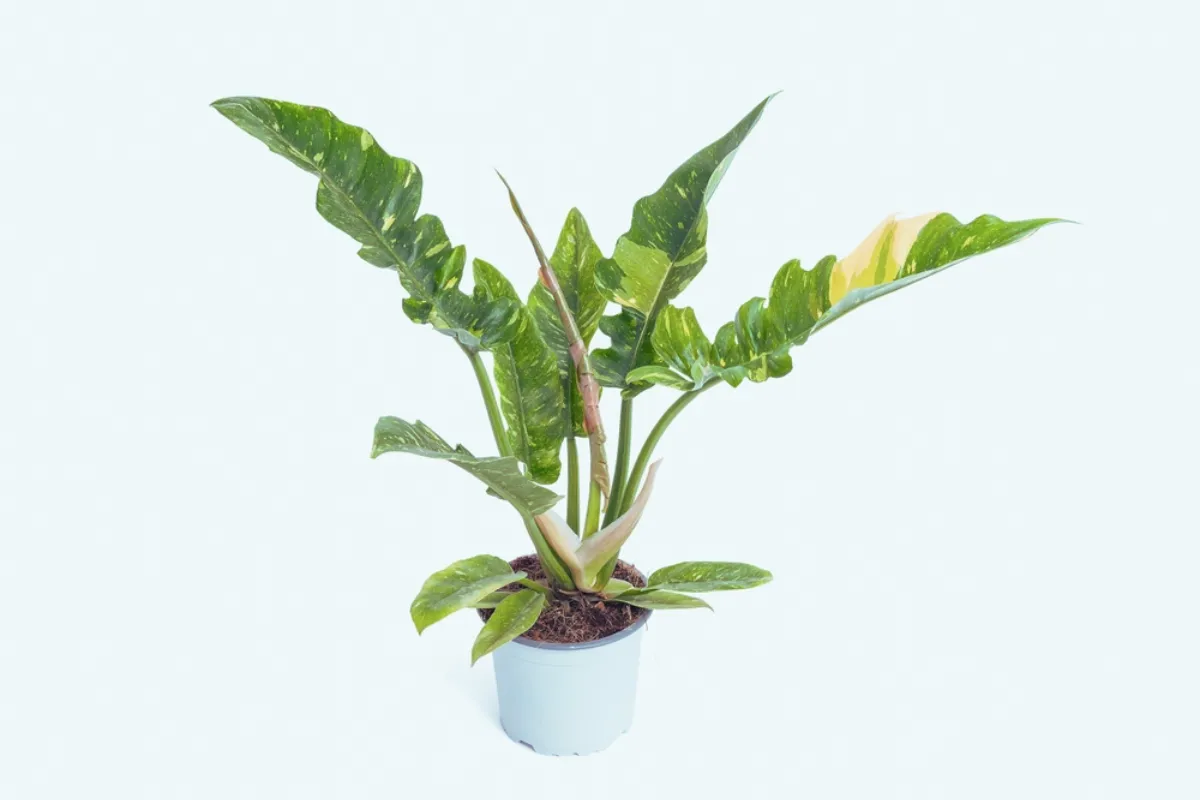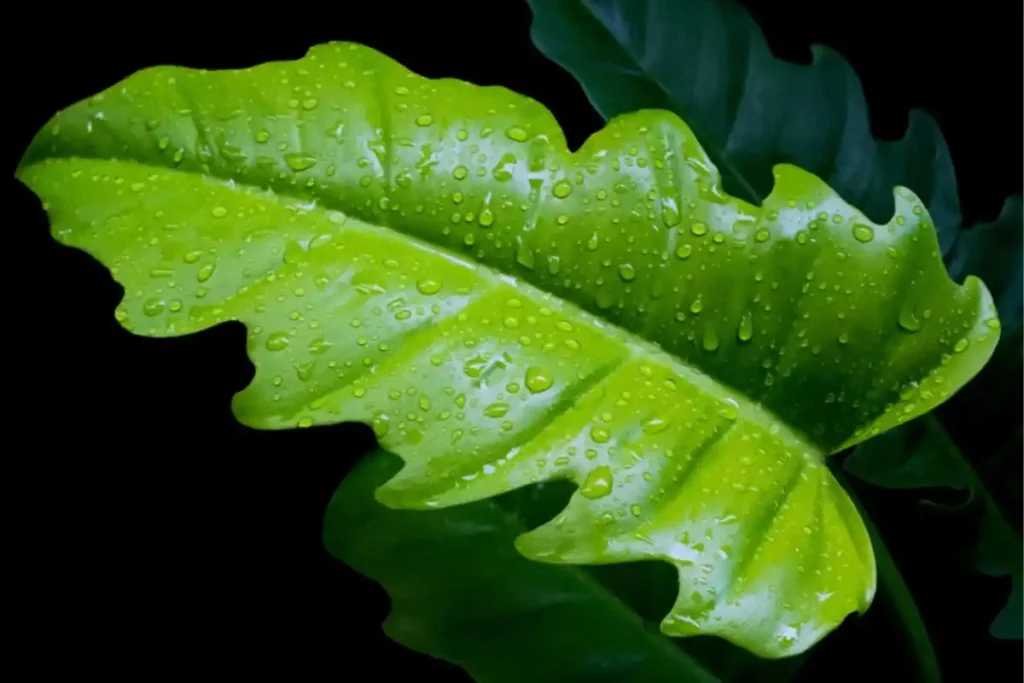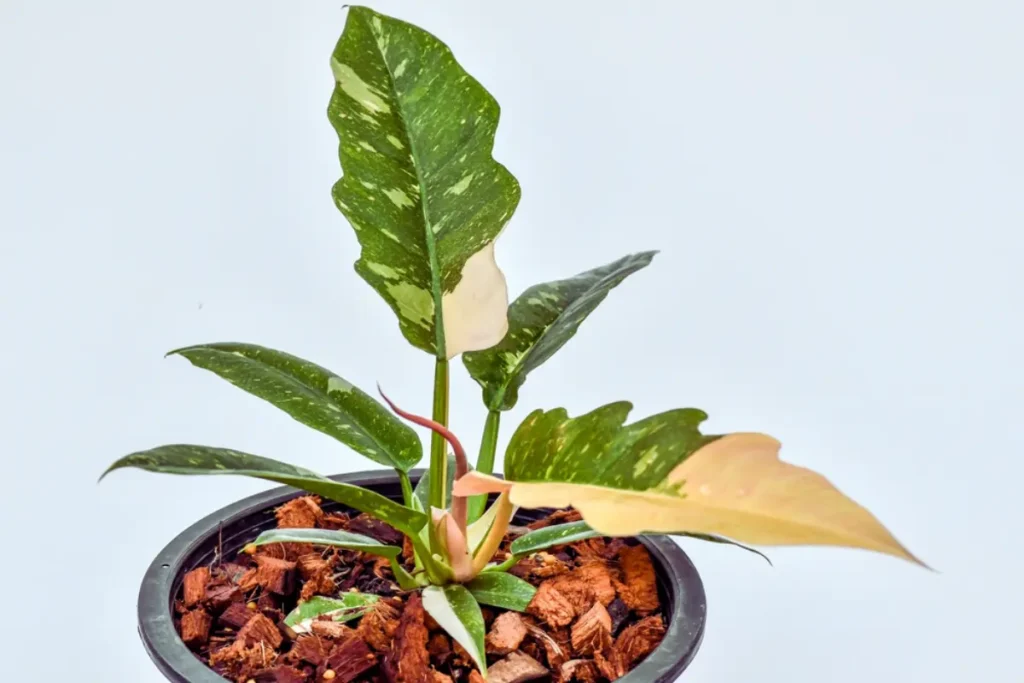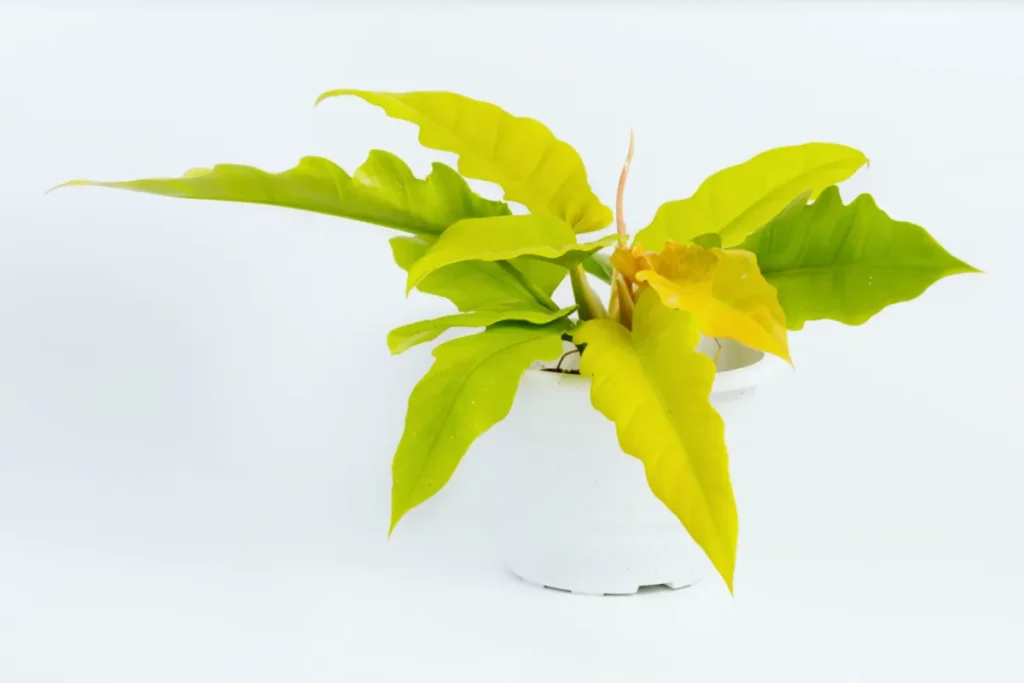Philodendron Ring of Fire Care Guide and Growing Tips

The Philodendron Ring of Fire is a stunning, rare plant that has captured the hearts of houseplant enthusiasts worldwide. With its fiery, variegated leaves that blend shades of green, yellow, orange, and red, it’s no wonder this plant is so coveted. But let’s be honest—owning this beauty isn’t always easy. From its high price tag to the challenges of maintaining its vibrant variegation, many plant lovers feel overwhelmed.
If you’ve struggled to find one, worried about keeping it alive, or felt frustrated by slow growth or yellowing leaves?. This blog is here to guide you every step of the way. Whether you’re a beginner or a seasoned plant parent, we’ll help you solve all your Ring of Fire Philodendron problems, from care tips to propagation secrets. Stay with us, and let’s turn your plant dreams into reality!
Ring of Fire Philodendron: Profile & Care Guide
Feature | Details |
|---|---|
Botanical Name | Philodendron ‘Ring of Fire’ (P. bipinnatifidum × P. selloum) |
Common Name | Ring of Fire Philodendron |
Plant Type | Perennial, climbing tropical aroid |
Mature Size | Up to 8 ft tall, 6 ft wide; leaves up to 2 ft long |
Growth Rate | Slow to moderate |
Light | Bright, indirect light; avoid harsh sun |
Watering | Low; water when top 2–3 in soil is dry |
Soil | Airy, well-draining aroid mix (soil, coir, bark, perlite) |
Soil pH | Acidic to neutral (≈6.5) |
Temperature | 65–80 °F (18–27 °C); avoid below 55 °F |
Humidity | Prefers >60% |
Fertilizer | Monthly in spring/summer; none in winter |
Propagation | Stem cuttings (water or soil) |
Potting | Repot every 2–3 years in spring/summer |
Bloom | Rare; pale yellow to white flowers (spring/summer) |
Hardiness Zones | USDA 9–11 (outdoor); indoor elsewhere |
Pests/Diseases | Spider mites, mealybugs, fungus gnats, root rot, fungal leaf spot |
Common Problems | Yellow leaves, brown tips, loss of variegation |
Toxicity | Toxic to pets and humans (calcium oxalate crystals) |
Care Guide for Philodendron Ring of Fire
The Philodendron Ring of Fire is a breathtaking plant, but it requires specific care to thrive. Whether you’re nurturing a young plant or caring for a mature Ring of Fire Philodendron, this guide will help you keep it healthy and vibrant. Let’s break it down step by step.
Light Requirements
The Philodendron Ring of Fire loves bright, indirect light. Direct sunlight can scorch its delicate leaves, while too little light may cause the variegation to fade. Place it near an east or north-facing window for the best results. If you notice the leaves losing their vibrant colors, it might be a sign to adjust the lighting.
Watering Tips
Watering is crucial for this plant. Keep the soil consistently moist but not soggy. Overwatering can lead to root rot, while underwatering may cause the leaves to droop or turn yellow. A good rule of thumb is to water when the top 1-2 inches of soil feel dry. During winter, reduce watering frequency as the plant’s growth slows down.

Humidity and Temperature
This tropical beauty thrives in high humidity (60-80%) and warm temperatures (65-85°F or 18-29°C). If your home is dry, consider using a humidifier or placing the plant on a pebble tray with water. Avoid cold drafts and sudden temperature changes, as they can stress the plant.
Soil Mix
A well-draining, aerated soil mix is essential for the Philodendron Ring of Fire. Use a blend of peat moss, perlite, and orchid bark to ensure proper drainage and root health. This mix mimics its natural habitat and prevents waterlogging, which can harm the roots.
Fertilizer
Feed your Philodendron Ring of Fire with a balanced, water-soluble fertilizer (e.g., 20-20-20) every 4-6 weeks during the growing season (spring and summer). Reduce feeding in fall and winter when the plant’s growth slows. Over-fertilizing can lead to salt buildup, so flush the soil occasionally with water.
Pruning
Pruning helps maintain the plant’s shape and encourages bushier growth. Use clean, sharp scissors to trim yellow or damaged leaves. You can also cut back leggy stems to promote new growth. Regular pruning keeps your Philodendron Ring of Fire looking lush and healthy.
Potting and Repotting
Repot your Ring of Fire houseplant every 1-2 years or when it outgrows its current pot. Choose a pot that’s 1-2 inches larger in diameter and has drainage holes. Gently loosen the roots during repotting and place the plant in fresh soil. This is also a great time to check for root rot or pests.
Bonus Tips for a Thriving Philodendron Ring of Fire
- Mature Ring of Fire Philodendron: As your plant matures, it may develop larger leaves and a more pronounced variegation. Ensure it has enough space to grow and adjust care as needed.
- Philodendron Ring of Fire Flower: While rare indoors, mature plants may produce flowers. Focus on providing optimal care to encourage this stunning event.
- Large Philodendron Ring of Fire: For larger plants, consider adding a moss pole or trellis to support its climbing habit and enhance its beauty.
Common Problems and Solutions
Here are the most common issues you might face with your Philodendron Ring of Fire indoor plant and how to solve them:
Why Are My Philodendron Ring of Fire Leaves Turning Yellow?
- Cause: Overwatering, poor drainage, or nutrient deficiency.
- Solution: Check the soil moisture and ensure proper drainage. Adjust your watering schedule and consider fertilizing during the growing season.
How to Deal with Pests on Philodendron Ring of Fire
- Common Pests: Spider mites, mealybugs, and aphids.
- Solution: Wipe the leaves with a damp cloth or use insecticidal soap. For severe infestations, neem oil is an effective natural remedy.
Preventing Root Rot in Philodendron Ring of Fire
- Cause: Overwatering or poorly draining soil.
- Solution: Use a well-draining soil mix and ensure the pot has drainage holes. Water only when the top 1-2 inches of soil are dry.
Why Is My Philodendron Ring of Fire Losing Variegation?
- Cause: Insufficient light or improper care.
- Solution: Move the plant to a brighter spot with indirect light. Avoid direct sunlight, which can scorch the leaves.
Propagation
Propagating your Philodendron Ring of Fire is a rewarding way to grow your collection. Here’s how to do it right:
How to Propagate Philodendron Ring of Fire
- Take a stem cutting with at least one node and a few leaves.
- Place the cutting in water or moist soil until roots develop.
- Transfer to a pot once the roots are 2-3 inches long.
Steps to Propagating Philodendron Ring of Fire
- Step 1: Sterilize your cutting tools.
- Step 2: Cut a healthy stem just below a node.
- Step 3: Place the cutting in water or soil.
- Step 4: Keep it in a warm, humid spot with indirect light.
- Step 5: Transplant once roots are established.
Common Mistakes to Avoid
- Using unhealthy or diseased cuttings.
- Overwatering the cutting, which can cause rot.
- Placing the cutting in direct sunlight, which can dry it out.
Toxicity Concern for Pets & Humans
Yes, the Philodendron Ring of Fire is toxic to both pets and humans if ingested. It contains calcium oxalate crystals, which can cause irritation, swelling, and digestive issues. Keep it out of reach of children and pets.
Safety Tips for Pet’s Owner
- Wear gloves when handling the plant to avoid skin irritation.
- Wash your hands thoroughly after pruning or repotting.
- If ingested, seek medical or veterinary attention immediately.
Related: Explore the popular philodendron including Pink Princess, Philodendron Birkin, and Brasil philodendron to find the best match for your home and office.
Ring of Fire Philodendron Varieties
The Philodendron ‘Ring of Fire’ is a standout in the world of rare and exotic plants, but did you know it has a few fascinating varieties? Each variety boasts unique characteristics, making them highly sought-after by collectors and plant enthusiasts. Let’s explore the different types and what makes each one special.
Philodendron Ring of Fire Variegated
The Philodendron Ring of Fire variegated is the most well-known variety, celebrated for its striking foliage. Its leaves display a mesmerizing mix of green, yellow, orange, and red, resembling the colors of a blazing fire. The variegation patterns are unpredictable, making each leaf a unique masterpiece.

Philodendron Ring of Fire Golden
The Philodendron Ring of Fire golden, also known as Golden Ring of Fire Philodendron, is a rare and exquisite variant. Its leaves feature a golden-yellow hue mixed with green, creating a sunlit, tropical vibe. This variety is perfect for adding a touch of warmth and brightness to your indoor jungle.

Decor Ideas
The Philodendron Ring of Fire is a stunning addition to any space. Here are some decor ideas and pro tips:
- Statement Piece: Place it in a bright corner as a focal point. Its vibrant leaves will instantly elevate the room.
- Hanging Planter: Use a macramé hanger to showcase its trailing vines.
- Terrarium Style: Pair it with other tropical plants in a large terrarium for a mini jungle vibe.
- Creating jungle: Use a moss pole to support its climbing habit and enhance its growth.
Final Thoughts
Congratulations! You’ve now unlocked the secrets to caring for the stunning Philodendron Ring of Fire. Whether you were struggling with yellow leaves, curious about propagation, or wondering how to style this beauty in your home, we’ve covered it all. You’re in the right place, and your plant journey is about to get a whole lot easier. With the tips and solutions provided, you’ll not only keep your Philodendron Ring of Fire thriving but also enjoy the process every step of the way. Happy planting!
